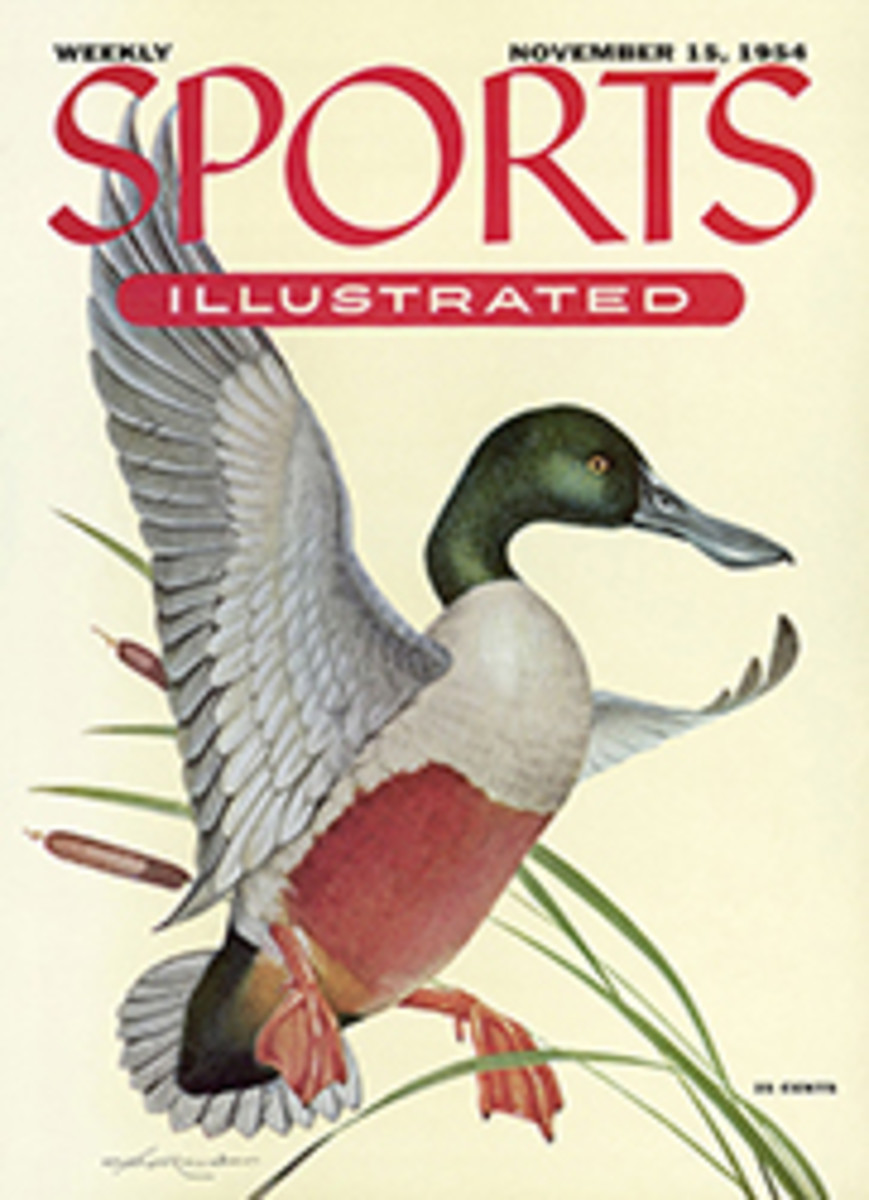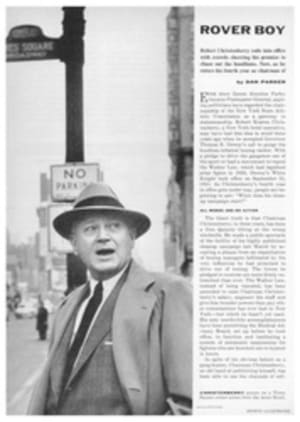
MG SHOWS OFF ITS NEWEST MODEL
In a world where the more different cars look the more they are the same, the new MG TF-1500 is a refreshing experience. For 1955, the most popular small car in America exhibits the same uncompromising classicism as it did a year ago when the TF series was introduced. In fact, when I picked up the car lent me by J. S. Inskip of New York for testing, I found this newest MG identical with its predecessor except for a small enamel plaque on the hood proclaiming "TF-1500." Even the engine is outwardly the twin of the famous XPAG series power unit; but underneath it is a different story. A new specially cast cylinder block provides an extra 13 cubic inches displacement, adding five and a half horsepower.
What these additional horses mean in terms of improved performance is not as immediately apparent as a critical enthusiast might expect, but that good old "MG feel" is there in full measure, with a few extras added. It is a feeling hard to describe since its chief attraction is deceptively compounded of contradictory qualities-robustness and nimbleness. You sit bolt upright and relatively high, with the thin-rimmed, adjustable steering wheel close to your belt line and the slim gearshift lever directly under your right hand. The engine revs up eagerly, with a characteristic (but unalarming) chatter above 5,000 rpm; the steering is instantaneous and you are soon aware that the whole machine is far more solidly built than necessary, especially in the bodywork, which still uses wood. The penalty for this huskiness is around 300 pounds of superfluous weight unhelpful to acceleration, yet the MG is a very maneuverable sports car, and its compact handiness compensates largely for this handicap.
The car tested was sufficiently limbered up to give a good idea of its performance and what the extra horsepower contributed by comparison with its predecessor, the TF. The first improvement noted was in low-speed flexibility. It is now possible to pull away so smoothly from 20 mph in high gear, and 15 mph in third, that any kind of traffic can be negotiated with these two gears alone. Second is strictly for emergencies, while low gear would show up to advantage when scaling the side of a cliff. For everyday use, this flexibility is everything that modern requirements demand. However, experienced MG owners who indulge in mild forms of competition might feel entitled to expect a little more from the new engine than is possible with the present gear ratios. With the transmission unchanged, second and third gears are still too widely spaced for maximum pickup or fast downshifting, while snap upshifts tend to override the synchromesh and produce a slight clash. The optional 4.55 rear axle ($24 extra) should improve matters by raising gear speeds about one mph per 1,000 rpm, but it won't change the relative ratios.
TOP GEAR IS LIVELIER
The other advantage derived from the larger MG engine is evident at the upper end of the cruising range. From 3,500 rpm up (about 56 mph in high gear) the TF-1500 is much livelier than its predecessor. While last year's TF took 19.4 seconds to accelerate from 50 to 70 mph in fourth gear, the new car does it in 13.1 seconds. Acceleration from a standing start through the gears also is notably better, with 0-60 mph nearly as fast as the supercharged TF and at least three seconds faster than last year's stock model.
Road-holding is unchanged, which means good within the limitations imposed by a relatively soft suspension not primarily designed for racing. The MG is the kind of a car that can lure an exuberant driver into a turn faster than he ought to go; but it is kind to such mistakes. The rigid chassis and proper weight distribution offset body lean, and it sticks well to the road, breaking loose only under real provocation. The brakes, too, are efficient and light to the touch, though very hard applications quickly repeated seem to induce momentary fade.
The test car was handsomely finished in the traditional MG manner which spurns rivets where nuts and bolts can be used and still employs chrome wood screws to fasten the upholstery panels. The light-gray synthetic lacquer was pleasingly complemented by red leather upholstery (genuine) used on the bucket seats, instrument panel, doors and crash pad, and by the black pile carpet and black brake drums. The snug beige nylon top and tonneau cover have a silky, expensive look and only the knock-off type wire wheels are extra, costing $135.
Minor faults are much the same as noted on the 1954 TF model. The dimmer switch is too high above the footboard, so that you have to raise your left knee while groping around for it. The right segment of the steering-wheel rim obscures the temperature gauge and ammeter on the center dial. Leg room (21¼ inches from seat edge to pedals) is only comfortable with the driving seat fully back, even for an average person. The seat backs, though wide and deep (21 by 18 inches) and nicely curved, are not adjustable for tilt. On the car tested, the gas-tank filler cap suffered from a chronic leak when cornering fast, but the scaled dipstick was a neat idea. A larger rearview mirror also would be an advantage.
A "FUN" CAR
The new MG is even more of a "fun" car to drive than last year's version and its gas thirst is absurdly small. At $1,995 (plus $50 handling charges) it represents very honest value.
[originallink:10457396:41493]
PHOTO

